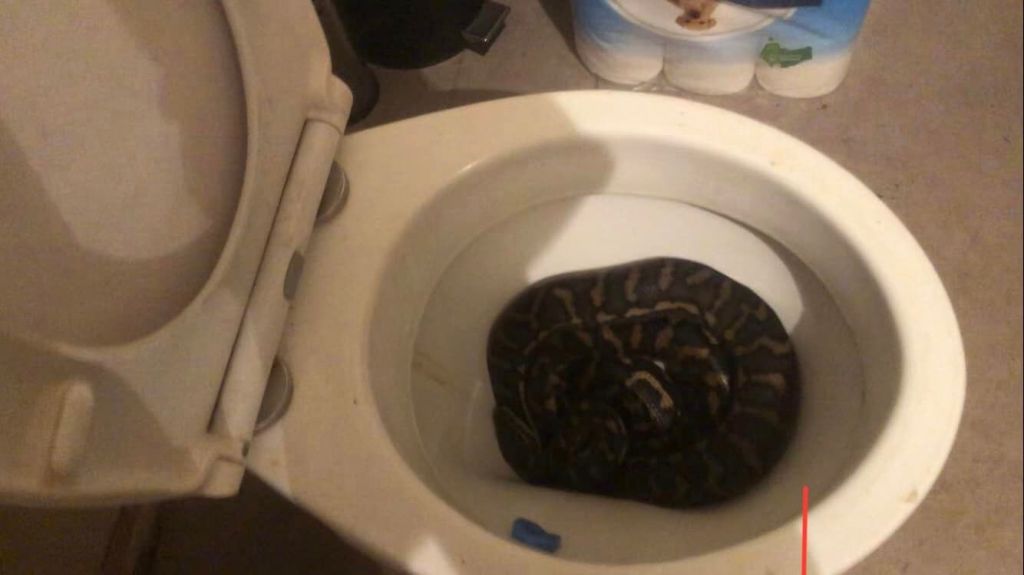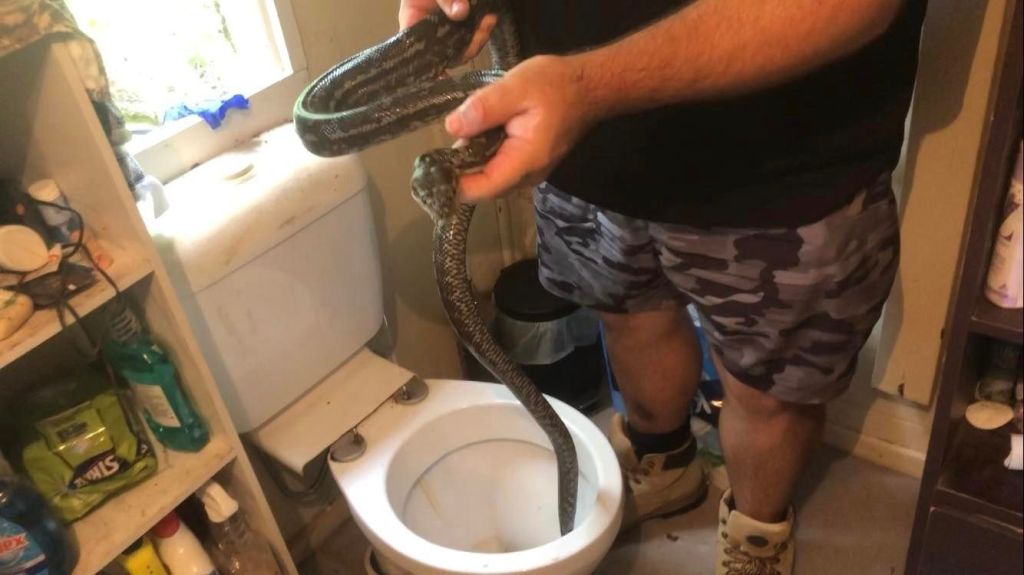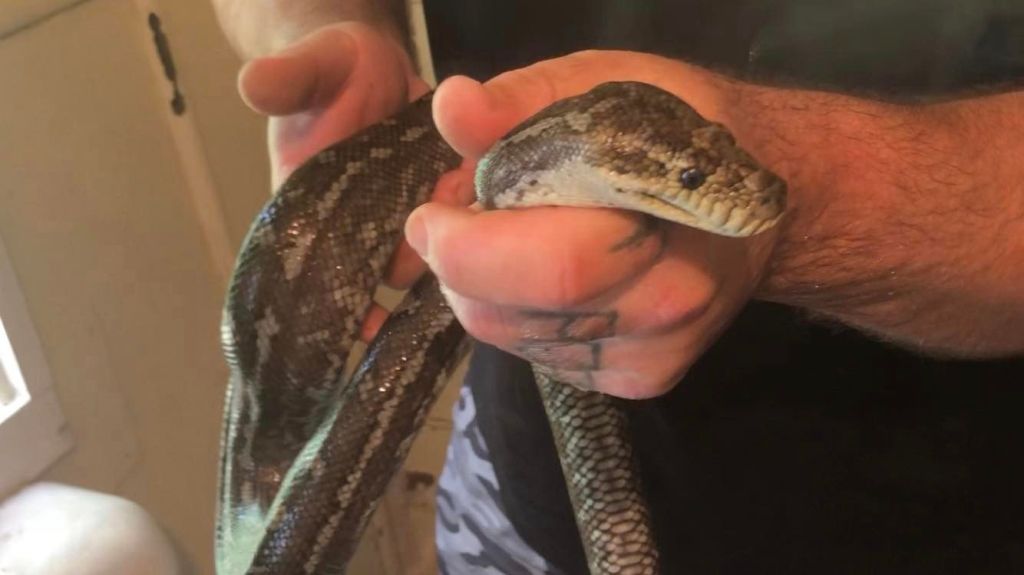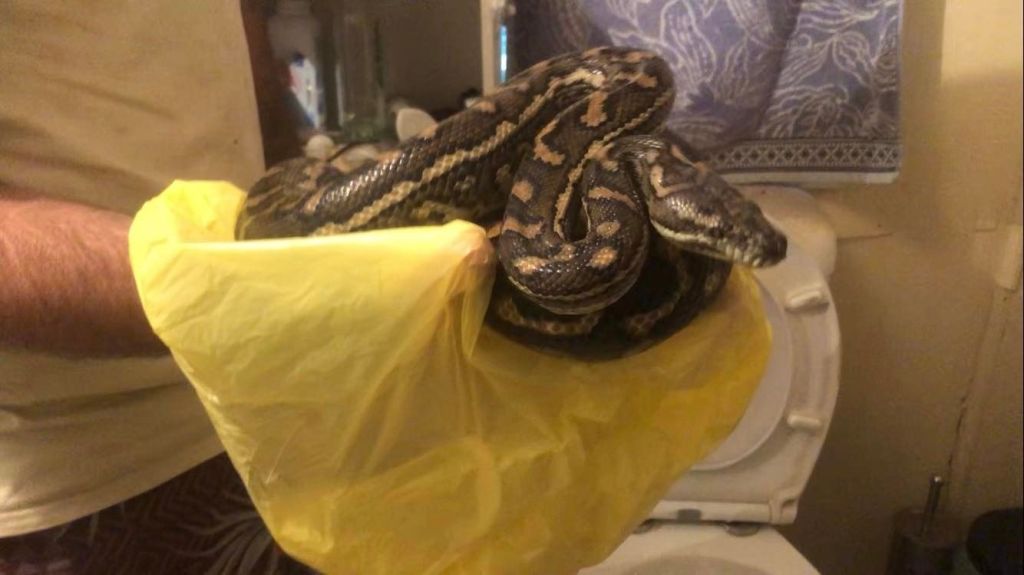Pythons invaded shocked man’s toilet twice in one week: ‘Not the snake you want to crawl all over you’
A slithering No.2.
An Australian man found a python coiled inside his toilet — twice in one week.
Although finding someone’s leftover business inside the toilet is repulsive, it might be preferred to find defecation rather than a scaly reptile hissing at you.
Hervey Bay Snake Catchers in Queensland, Australia, received a call on Oct. 22 to remove a coastal carpet python from a toilet.
“The homeowner contacted us as he found the snake when he went to use the toilet,” Drew Godfrey told Newsweek. “It was a female that was likely in there to soak its skin before shedding.”
After extracting the reptile from the toilet bowl and pipes, they posted an image on Facebook describing the encounter.
“It managed to get right into the S bend, so we had to cut the pipe under the house, poke from one end, and flush from the other,” the company wrote. “It eventually got annoyed enough to come out and see us and Jonsey took one for the team and dove on in there to grab it.”
They revealed close-up images of the python being pulled from the toilet. While coastal pythons are nonvenomous snakes that are “harmless” to humans, the homeowner was still shocked by their surprised appearance.
However, a few days later, on Oct. 25, the Australian residents heard a hiss from another unwelcome guest inside their toilet.
The python, which was of the same species as the first reptile but of a different sex, was wrapped up inside the bowl until Hervey Bay Snake Catchers made a return visit to remove the cold-blooded animal.
“The male most likely entered looking for the female as that was the last place she would have left a scent trail,” Godfrey continued to Newsweek.
Despite the skin crawling experience, snake catchers are used to uncoiling the reptiles in inconvenient areas, so it was just another day on the job.
“We’ve had to do this several times before,” the snake handler added. “Getting snakes from toilets is not unusual but thankfully not that common. It’s something we may have to do once or twice per year.”















